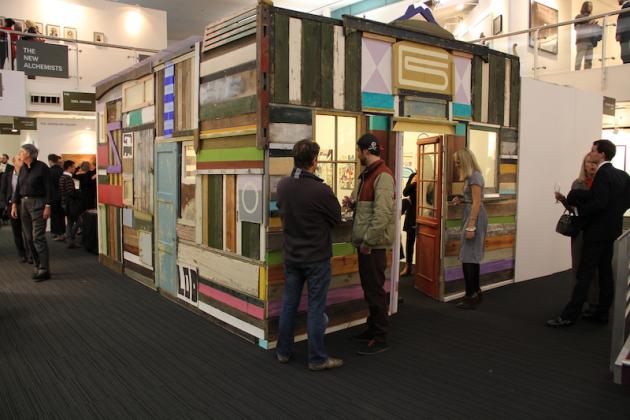Artists’ organisation ALISN has sublet its booth at the London Art Fair to small independent art galleries who are normally excluded from such events. This intrepid and novel decision by the Artist-Led Initiatives Support Network (ALISN www.alisn.org) will give up to ten independent artist-run galleries a chance to exhibit work by unknown artists, for a fraction of the usual cost of a stand at the event.
Housed in disused industrial units, or shops, in out-of-the-way neighbourhoods, often with -no street sign or outward indication of their existence, artist-run spaces are an industry trade secret – patronised almost exclusively by other artists and a small number of those in the know. Usually short-lived, but always innovative and pushing the boundaries of contemporary art, artist-run spaces are both unfettered by commercial considerations and forced to be creative with tight budgets. The public is rarely aware of their activities. For the first time, ALISN will bring into the public domain a selection of the most sophisticated artist-led projects in the UK to present works by promising new artists, whose current, early-stage careers are right now being shaped at these independent spaces. For as long as artists have existed, they have organised themselves to create new types of exhibitions and public engagements to circumvent or supplement the establishments of their day. In 1911 Der Blaue Reiter began organising touring exhibitions around Germany,
showing the then new Modern Art of ground-breaking new painters such as Wassily Kandinsky and Franz Marc.
In the 1960s, the Artist Placement Group, which included John Latham and Barry Flanagan, broke outside the boundaries of studio and gallery, by taking artists into industry and government; in the 1990s City Racing was holding the first exhibitions for future YBAs like Sarah Lucas and Turner Prize winner Gillian Wearing in a disused betting shop in London. At the same time the now legendary Transmission in Glasgow was launching the careers of
future greats such as Douglas Gordon and Martin Boyce – a time later described by Hans- Ulrich Obrist as ‘The Glasgow Miracle’. ALISN curators, sculptor Iavor Lubomirov and painter Bella Easton direct their own artist- run space LUBOMIROV-EASTON in Deptford, South London. Easton, who trained as a painter and print-maker at the Royal Academy Schools and self-taught Lubomirov who studied Mathematics at Oxford, are one of many artist partnerships, who are increasingly taking the reigns in their own hands in order to exhibit their own and other artists’ work. Iavor Lubomirov says: “Artists have always formed collectives, or created independent exhibition spaces, but this has become an increasingly frequent phenomenon in the last ten years. There are currently over 300 artist-led galleries in the UK, compared to just a handful ten or twenty years ago and many artists are choosing to take this route rather than pursuing existing commercial galleries. Less than 1% of current artist-run spaces, however, would
consider showing at an art fair, both because of the financial barrier around these market places and because they almost always operate on a non-profit basis, creating and showing art for its own sake and relishing the freedom this allows them.” Bella Easton says: “As far as we know this is a first for the London Art Fair. What makes artist-run spaces really important is that artists are choosing the art work being shown, rather than dealers or collectors and so they become places for dialogue and critical engagement between artists, resulting in constant innovation and evolution. They are hotbeds where the future talents of tomorrow are being nurtured and shaped by their own peers, free from commercial considerations and unhindered by established ideas.”

